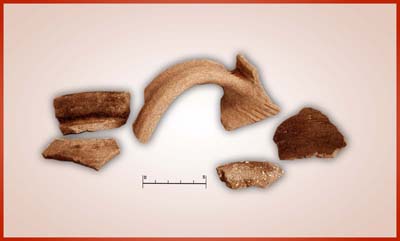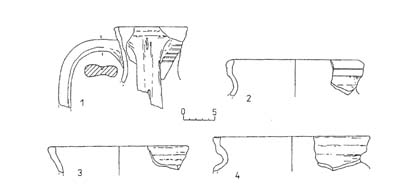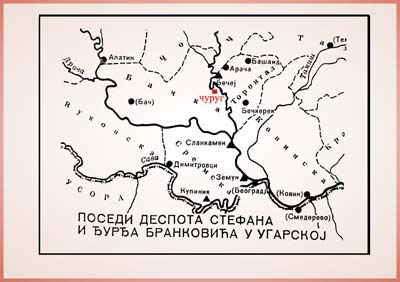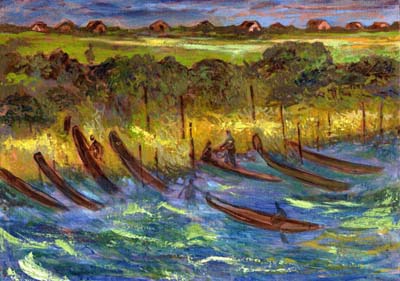Serbian settlement of the pre-Turkish and Turkish era
(15th-17th century)
Settlement of the 15th-16th century
The settlement of the 17th century was preceded by a settlement from the times of the Turkish attacks on these regions during the 15th and the 16th century. The structures from this period were not explored during the excavations from 1997 to 2002, but around 300 m north of the archeological site a dug-in structure of considerable dimensions was damaged. The pottery photo 193 from this period was crafted on a swift wheel. Apart from pots table 4/2-4 , that are the most numerous, pieces of jugs were also found table 4/1. A similar jug from Belgrade was dated to the period between 1427 and 1521, while a pot from the 15th century from Novi Bečej corresponds to one of the pots from Čurug. On the large area around this structure there are numerous surface finds from the same period. It should be noted that nearby Bečej was at the time in the possession of Serbian despots map 8. [1]
[1] Taken from the History of the Serbian People II, Belgrade 1982.
Photo 193: Pieces of dishes crafted on a swift wheel Table 4/1-4: Pieces of dishes crafted on a swift wheel Map 8: Estates of the Serbian Despots in Hungary17th Century Settlement
The final horizon of inhabiting “Stari Vinogradi” belongs to the second half of the 17th century. The structures from this period are concentrated along the shore itself. Apart from three large houses, one of which slide 131 with technical drawing had two rooms, and several smaller cottages slide 132, storage pits slide 133 of larger dimensions were also found here. Apart from pottery — pots made on a swift wheel, with calcite in their facture, glazed bowls photo 194 and jugs photo 195, gray polished table ceramics photo 196, as well as a jug of Central European origin photo 197 — in these structures fishing weights were found photo 198, as well as a button-casting mold, silver photo 199 and bronze photo 200 hairpins, clay pipes photo 202 and several bronze tools photo 201 . Of objects made of bone one skate was found photo 203 as well as one awl photo 204 , and of stone ones a flint photo 205 .
In the storage area for jewelry and money from the 17th century from Ritopek pins were found with rounded heads, to which the silver pin from Čurug is quite similar.
Pots with calcite, as well as the silver hairpin, indicate first of all the Serbian population of Čurug, which settled these regions more numerously since the time of the Turkish conquest of Serbia, and somewhat later Hungaria map 9, [1] but also took part in the famous Austrian-Turkish wars at the end of the 17th and beginning of the 18th century map 10. [2]
1 Taken from the History of the Serbian People III-1, Belgrade 1993.
2 Taken from the History of the Serbian People III-1, Belgrade 1993.




